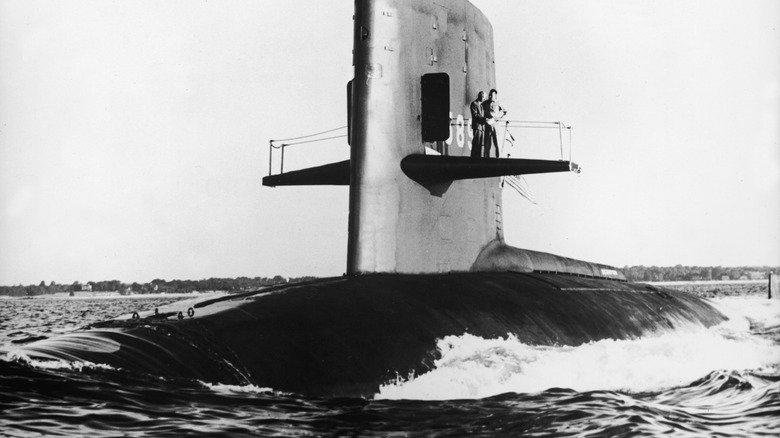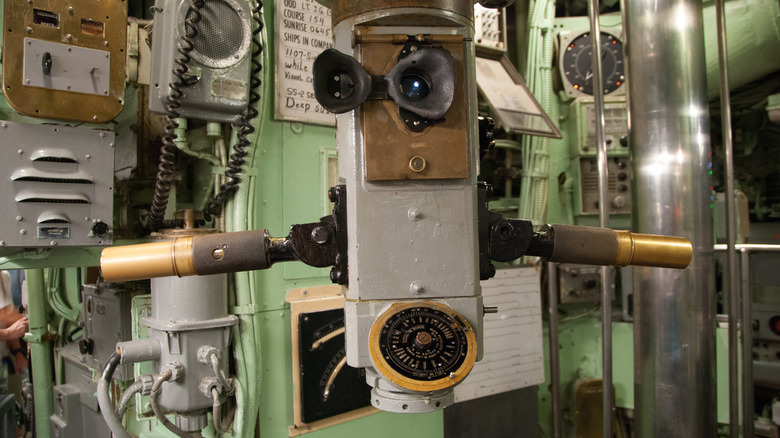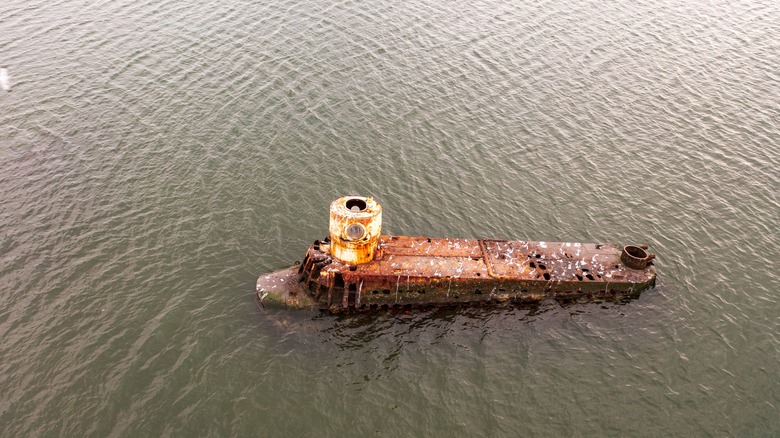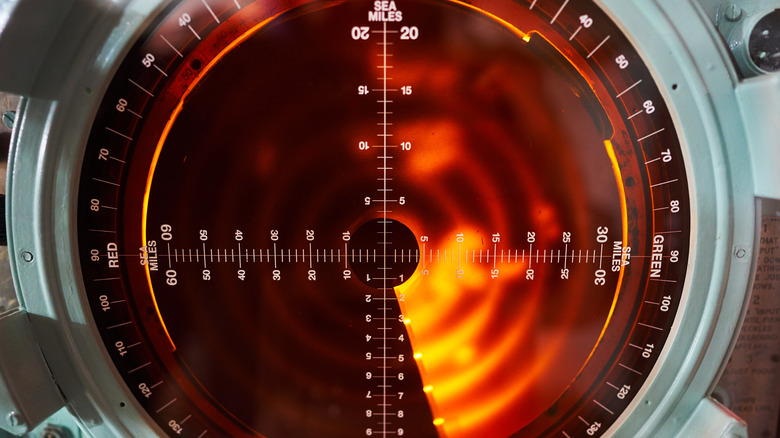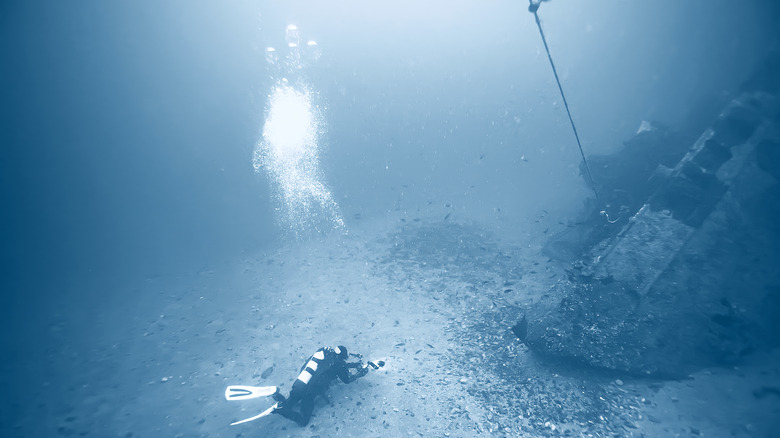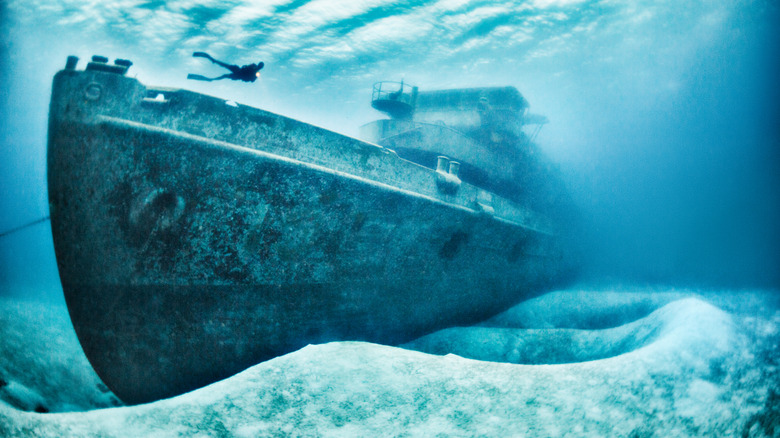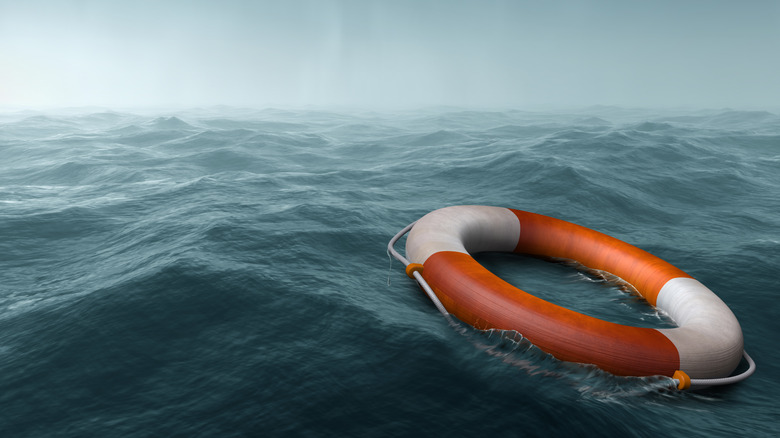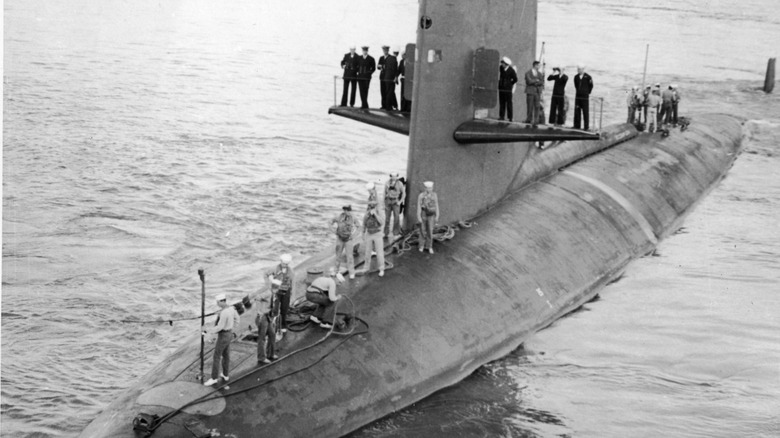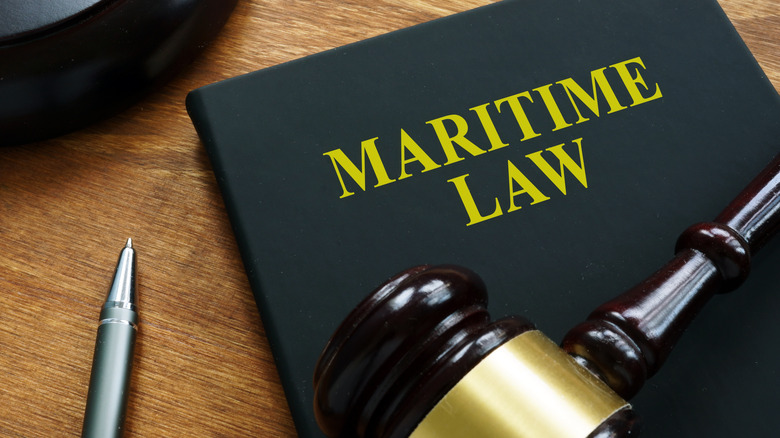USS Scorpion: The Cold War Mystery That Remains Unsolved
Naval warfare has been a part of history long enough to fill history books and provide legends and lore for the masses. Combat quickly moved from above to below sea level with the introduction of submarines. The United States Navy entered the era of underwater vessels when, in 1900, Irish immigrant John P. Holland designed the Holland submarine.
Then, in 1954, the United States Navy joined the other armed forces in the Nuclear Age after it introduced the USS Nautilus. The USS Nautilus was the first submarine of its kind as it was the first-ever nuclear-powered attack submarine. The technology of the Nautilus was unlike anything in the sea at that time, with an S5W reactor giving it impressive power.
Shortly after the addition of nuclear-powered submarines, the United States Navy took its newfound technology even further with the invention of the Skipjack submarine. The Skipjacks had an improved reactor and a teardrop-shaped hull, allowing for more speed and less sound. The nuclear power of the Skipjack gave it the ability to remain under the surface for longer periods of time.
Six total Skipjack submarines were made. The Skipjack, Scamp, Sculpin, Shark, Snook, and the Scorpion. The Scorpion is perhaps the most well-known Skipjack due to the mystery that surrounds it after its mysterious disappearance and recovery that was never explained. At least not to the public.
Submarines during the Cold War were kept in a near-constant state of work
The USS Scorpion was commissioned on July 29, 1960, and came as a formidable Cold War nuclear-powered vessel. The innovation of the submarine, combined with the high tensions of the time and the constant state of alert brought on by the Cold War, kept the Skipjack active and working almost constantly.
In August 1960, the Scorpion set out to European waters before eventually, in 1961, being transferred to a base in Norfolk, Virginia. The Scorpion kept a standard routine of patrolling the Atlantic coastline and practicing nuclear warfare drills. After a mechanical overhaul lasting from June 1963 to May 1964, the USS Scorpion began patrol of European waters. In 1966, the submarine was sent on an assignment to the Black Sea.
This constant state of patrol meant another overhaul was necessary after the voyage to the Black Sea. However, given the state of the Cold War and the need for submarines to be ready to combat the Soviets at a moment's notice, the USS Scorpion's readiness was put above proper maintenance even after years of constant patrol.
The USS Scorpion was in a disastrous mechanical state
The USS Scorpion's near-constant drills and patrol left it in a state of despair that was rightfully called out on multiple occasions by the crew, who not-so-affectionately nicknamed the vessel the "USS Scrap Iron."
The Scorpion was meant to receive a full overhaul in February 1967 at its home base in Norfolk, Virginia. However, the intensity of the Cold War led to pressure for the submarine to resume its patrols. After completing only what was considered emergency repairs, Chief of Naval Operations Admiral David Lamar McDonald signed off on the submarine and gave the okay for ultimately cutting corners regarding repairs. The overall cost came out to just one-seventh of what a normal submarine overhaul cost.
The lack of repairs meant that longstanding issues only grew more prevalent. Just one year later, in 1968, the Scorpion's mechanical problems included an electrical fire caused by a water leak and leaking refrigeration systems. The Scorpion was given a depth limit of no more than 500 feet below the surface. The choice to fix only what was considered emergency repairs has long been thought to play a serious role in the submarine's ultimate demise.
Official loss of communication
In May 1968, the USS Scorpion was tasked with observing Russian military activity and set out on an observational mission to the Azores. The sub was scheduled to return to Norfolk, Virginia, on May 27. However, when May 27 arrived, the Scorpion did not. The date of intended arrival was seven days after the last known communication from the submarine on May 20.
The last known communications from the USS Scorpion were meant to be received by U.S. Naval base Rota in Rota Cádiz but were instead picked up by Naval communications in Nea Makri, Greece. The message communicated that the submarine was closing in on the Soviet task force. Though the message assured that everything was going smoothly, the signals ended at midnight, and no one heard from the USS Scorpion again.
After it failed to arrive in Norfolk as scheduled, a search for the submarine ensued, and on June 5, 1968, the USS Scorpion, along with the 99 crew members on board, was officially declared lost.
The search for the USS Scorpion
After the USS Scorpion failed to arrive in Norfolk and was officially declared lost by the military and the media, the search for signs of the submarine and the 99 crew members on board continued. Even on June 30, 1968, when the submarine had been missing long enough to be officially removed from the Naval Vessel Register, search efforts still didn't slow.
When an unsuccessful summer of tireless searching came and went, autumn brought with it a break in the case. In October 1968, the USNS Mizar, a Navy Oceanic research ship, successfully located the USS Scorpion 400 nautical miles southwest of the Azores, where the submarine's final mission took place.
Once the submarine was located, other investigative ships were dispatched to the area to assess months of wear and tear caused by resting below the seawater in an attempt to understand what could have gone wrong on what otherwise would have been a routine mission for the seasoned Skipjack.
The investigation and damage assessment
Even though the public didn't realize anything was wrong until the USS Scorpion failed to arrive back at the port in Norfolk on May 27, there was speculation and reports stating that a non-public investigation had already begun. The last communication from the submarine was several days before its scheduled return, and the radio silence may have been enough to kick off an early and quiet investigation.
When the Scorpion was found in October 1968, it was discovered 9,800 feet deep and had seemingly skidded along the ocean floor as it landed. The position of one of the running lights gave investigators the knowledge that either the submarine was on the surface when a disaster struck or that an explosion had knocked it open. Investigators also speculated that a possible hull explosion could be to blame. Even with each theory and speculation from experts, a final cause for the sinking of the USS Scorpion was never decided on, or at least never released to the public.
1968 was a tragic year for submarines
The loss of the USS Scorpion and its 99 crew members was an absolute tragedy, but sadly, the Scorpion wasn't the only submarine that was lost that year. In 1968, submarines belonging to four separate navies were lost in one way or another.
On January 25, Israel's submarine, the INS Dakar, sank due to a mechanical failure and wasn't discovered until 1999, when it was found between Cyprus and Crete. January 27 brought an equally devastating scenario when a French submarine, the Minerve, completely disappeared off the southern coast of France. The Minverve remained missing for over 50 years until its discovery on July 22, 2019, 30 miles off the coast of Toulon.
March of 1968 brought with it another sunken submarine. This time, it was the Soviet Union's K-129. The USS Scorpion was the last of the four submarines, along with all of their crew, to be declared lost in 1968. While the USS Scorpion's reason for sinking has never been revealed, speculation has continued over the decades.
Some of the Scorpion's crew refused to return
While the public may not have been made aware of the mechanical crisis on board the USS Scorpion, the men who had served as the submarine's crew knew all too well of the dangers within. Crew member Dan Rogers served on the USS Scorpion as an Electrician's Mate for a year. An Electrician's Mate is responsible for the maintenance and repairs of the vessel's electrical equipment and control systems. This made Rogers well-versed in system safety measures.
The conditions inside were so poor that Rogers requested a transfer to a different submarine after his time on the Scorpion. In a quote published by The Baltimore Sun, Rogers spoke out after the loss of the USS Scorpion and said, "I didn't know it was going to sink, but I was absolutely uptight after having been on there and seeing the things I had seen. I was just unable to deal with going to sea again on the Scorpion." The overlooked wear and tear of the Scorpion was enough for crew members to distrust its integrity for another mission, but still, the Scorpion continued to venture out.
Conspiracy theories and cover-ups
The uncertainty surrounding the USS Scorpion's fate led to restless wondering and plenty of theories regarding what happened the day it sank and the events leading up to its demise. There were plenty of those who believed the United States military didn't want to disclose the mechanical crisis that was the state of the submarine as it would only come across as negligence.
A full two months before the Scorpion sank, the submarine's captain, Commander Francis Atwood Slattery, wrote up an emergency work request for the poor state of the submarine's hull. Other theories pointed to that of an enemy attack conducted by the Soviet Union. One theory even claims that the USS Scorpion was intentionally sunk by the Soviets in a retaliation effort for the loss of the K-129 submarine, which had sunk just weeks prior. The loss of the K-129 had been blamed on the United States.
None of the speculations regarding the USS Scorpion have been confirmed, and no further explanation for the tragedy has been offered since 1968.
The U.S. Navy has since improved maintenance requirements on submarines
The USS Scorpion was a casualty of a period when the United States felt overwhelming pressure and high tensions regarding nuclear warfare. Had these pressures not been such a prevalent stressor hanging over the heads of commanding officers, things may have been different. However, because of their existence, a "Planned or Reduced Availability" overhaul in 1967 was the best that the USS Scorpion received, and it wasn't enough to save it from disaster.
Most of the work on this non-traditional repair was done by the submarine's own crew, and it was the cheapest overhaul in U.S. Naval history at a cost of $3.2 million instead of the usual $20 million. After the incident in 1968 and the heavy scrutiny that followed, the "Reduced Availability" overhauls were removed entirely as an approved practice. The halting of this procedure may have come too late for the crew on the Scorpion's final mission, but it no doubt helped save countless lives in the future.
Whether or not the definitive reason for the Scorpion's sinking was mechanical failure, enemy fire, or something else entirely, the theories and mystery surrounding the submarine's fate live on.
